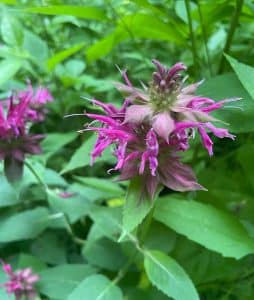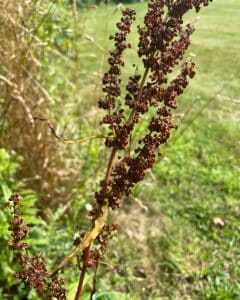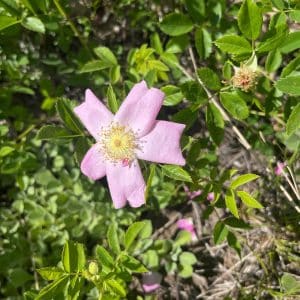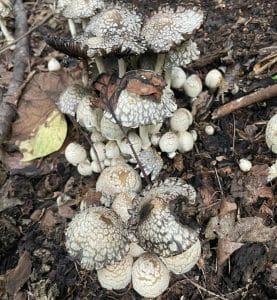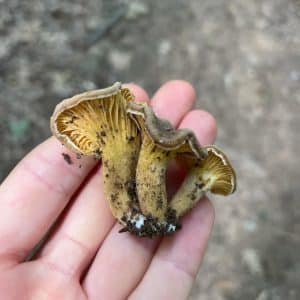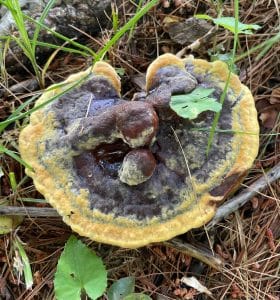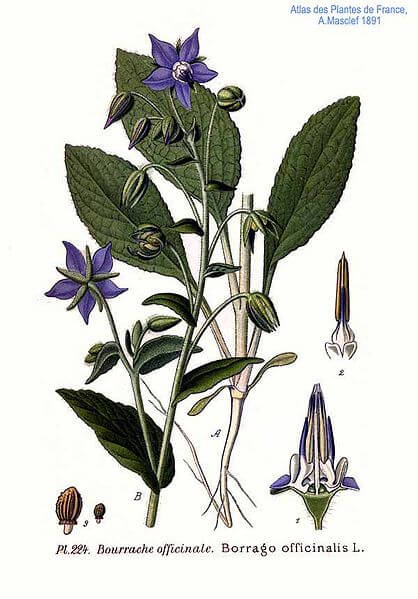
The Borage herb (Borago officinalis) is a Mediterranean native that is also commonly found in different parts of Europe and in the UK. Borage can typically grow to be 2’ to 3’. Many people can recognize this herb from its beautiful star-shaped flowers. They are typically blue, but white and pink variants also exist.
As an annual herb, Borage grows and reappears each year by self-seeding. While not as common as other herbs, this herb can be a wonderful addition to any garden. All parts of this plant, except its root, are edible and have culinary as well as medicinal uses. Additionally, these blooms are also great for bees and produce exceptionally delicious honey.
Edibility and culinary use
Historical sources have touted Borage as an amazing nutrient-loaded plant. Its leaves, flowers, and oil are widely consumed for their medicinal properties. With a unique cucumber-like flavor, Borage leaves are typically added in soups, salads, and beverages. Meanwhile, the flowers have a sweet honey-like taste and they’re mainly used as an edible garnish in cocktails and desserts. The flowers can also be crystallized to make candies. Lastly, Borage oil is harvested from the plant’s seed. The oil can be used topically to help skin inflammations or ingested as a supplement.
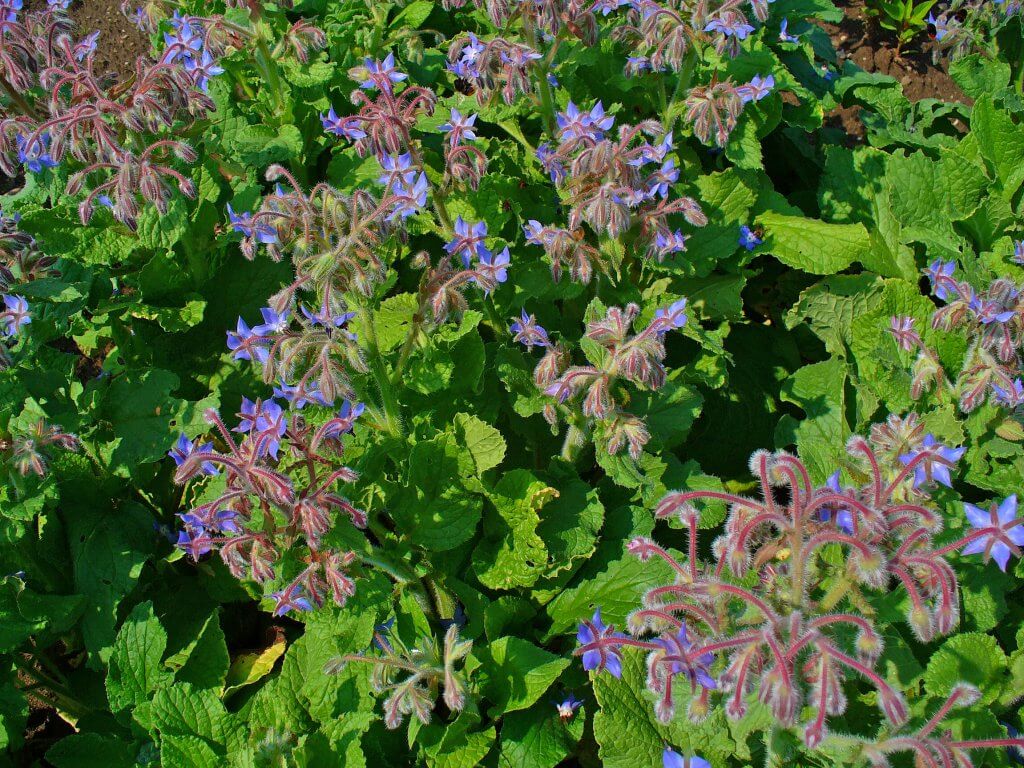
(Photo by: H. Zell/Wikimedia Commons)
Harvesting Borage at the right time is the key to maximizing the taste and improving your dining experience. The leaves taste best fresh, so pick them right before consumption. As for the flowers, simply use gardening scissors to snip right below a cluster of flowers to harvest them.
Health benefits
Borage is rich in vitamin A, Vitamin B-complex, and vitamin C as well as minerals, such as iron, manganese, copper, calcium, potassium, magnesium, and zinc. Most importantly, it also contains linolenic acid or omega-6 fatty acid which is essential for immunity, joint health, and skin health.
Borage oil helps to lower blood pressure and regulate the hormonal system. It’s also used to aid many ailments such as the common cold, arthritis, diabetes, ADHD, pain and inflammation, asthma, and bronchitis. It can even prevent heart diseases and strokes. Meanwhile, the leaves and flowers are consumed to treat cough, fever, colds, kidney problems, and inflammation as well as to help relieve stress, anxiety, and depression.
Cultivation
Borage can be a wonderful addition to any garden. It’s great for companion planting since it can protect other plants, such as tomato, strawberries, and cabbage. Not only that, planting Borage can help support your local bee population and attract other pollinators, like butterflies, to your garden. Fortunately, it’s not hard to cultivate this plant. It will continue to self-sow and reappear every year.

(Photo by: AnemoneProjectors/Wikimedia Commons)
This plant isn’t very picky when it comes to soil type. But moist, rich, and light soil with good drainage would be the best. It prefers a sunny location but will tolerate some shade. Borage isn’t water-demanding, but it can’t tolerate drought either, so make sure to water it regularly.
Before sowing, aerate and loosen the soil. Sow seeds directly after the last date of frost. Plant the seeds about ¼ to ½-inch under the soil and 12 inches apart from each other. Water abundantly right after planting but be careful not to flood the soil. The seeds will germinate in 5 to 10 days.
You can start harvesting the leaves any time after the plant begins to take leaves. The flowers will start blooming around late spring to early summer. Harvest the flowers each time they start to bloom to encourage faster bloom production. It’s advisable to sow the seeds every four weeks to have a constant supply of Borage flowers.
Cautions
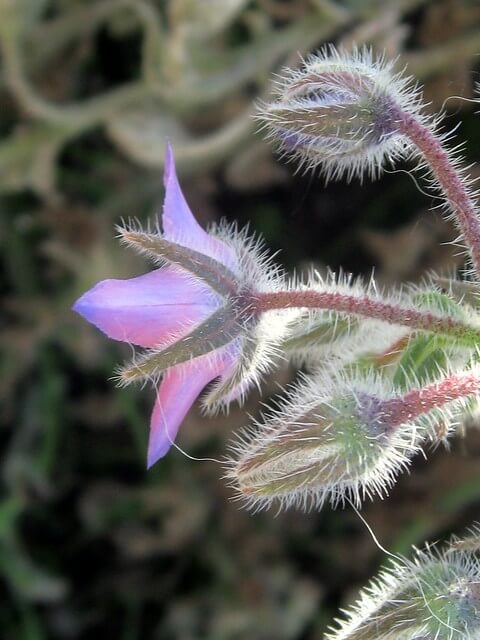
The coarse, hairy fuzz covering the plant contains a small amount of silica, which is a known irritant to most people. So, wear gloves to protect your hands when handling Borage.
It should also be noted that Borage contains small amounts of pyrrolizidine alkaloids (PA). The quantity is generally too small to cause any health issues unless you make it a major part of your diet. Ingesting PA in very high doses for a long period of time can damage the liver or cause liver cancer.
People with liver and bleeding problems should avoid consuming Borage as it might make the conditions worse. Borage may also increase the risk of bleeding during and after surgery, so it’s best to stop consuming this herb at least two weeks before surgery.
Conclusion
Borage is truly a nutrient powerhouse. Since ancient times, this herb has been cultivated for its culinary uses and amazing medicinal properties. With its fresh, cucumber-like flavor, there are numerous delicious and creative ways to incorporate this herb into your diet. As a self-sowing plant, it’s not hard to find this herb out in the wild. If you wish you can also consider planting Borage in your garden as a food source and to add a lovely splash of color to your garden.
---------------
Writen by Cornelia Tjandra
Cornelia is a freelance writer with a passion for bringing words to life and sharing useful information with the world. Her educational background in natural science and social issues has given her a broad base to approach various topics with ease. Learn more about her writing services on Upwork.com or contact her directly by email at cornelia.tjandra@gmail.com
Many of our readers find that subscribing to Eat The Planet is the best way to make sure they don't miss any of our valuable information about wild edibles.
See our privacy policy for more information about ads on this site

